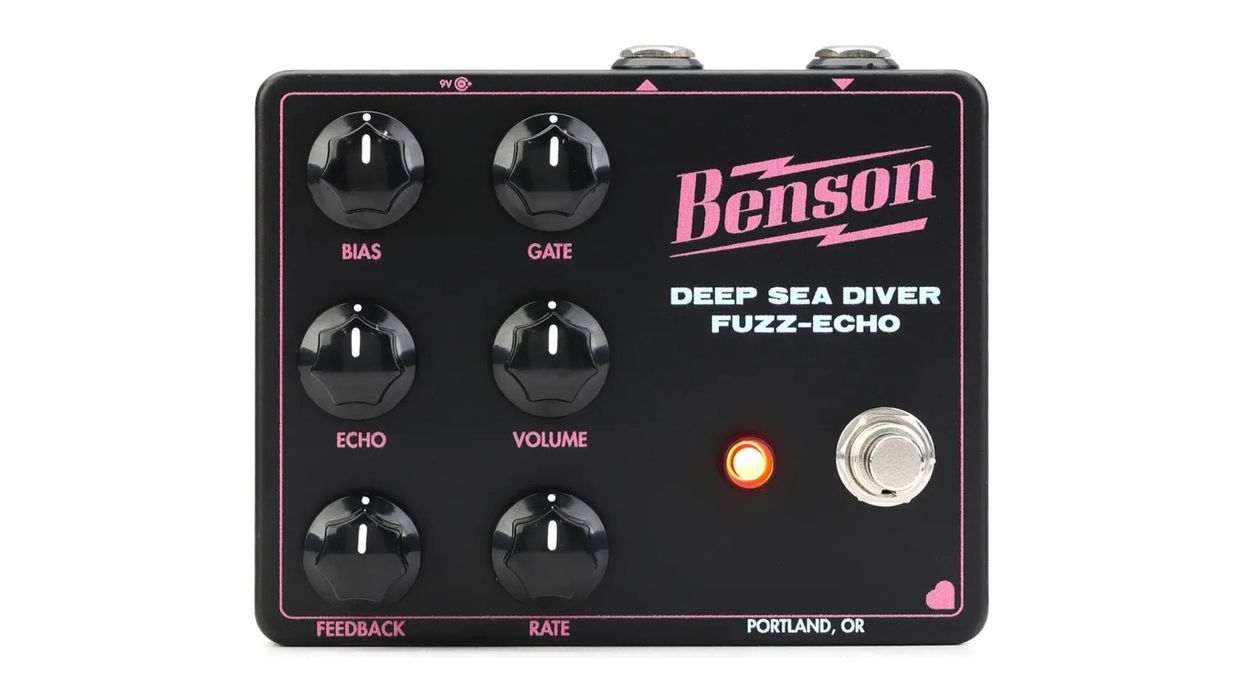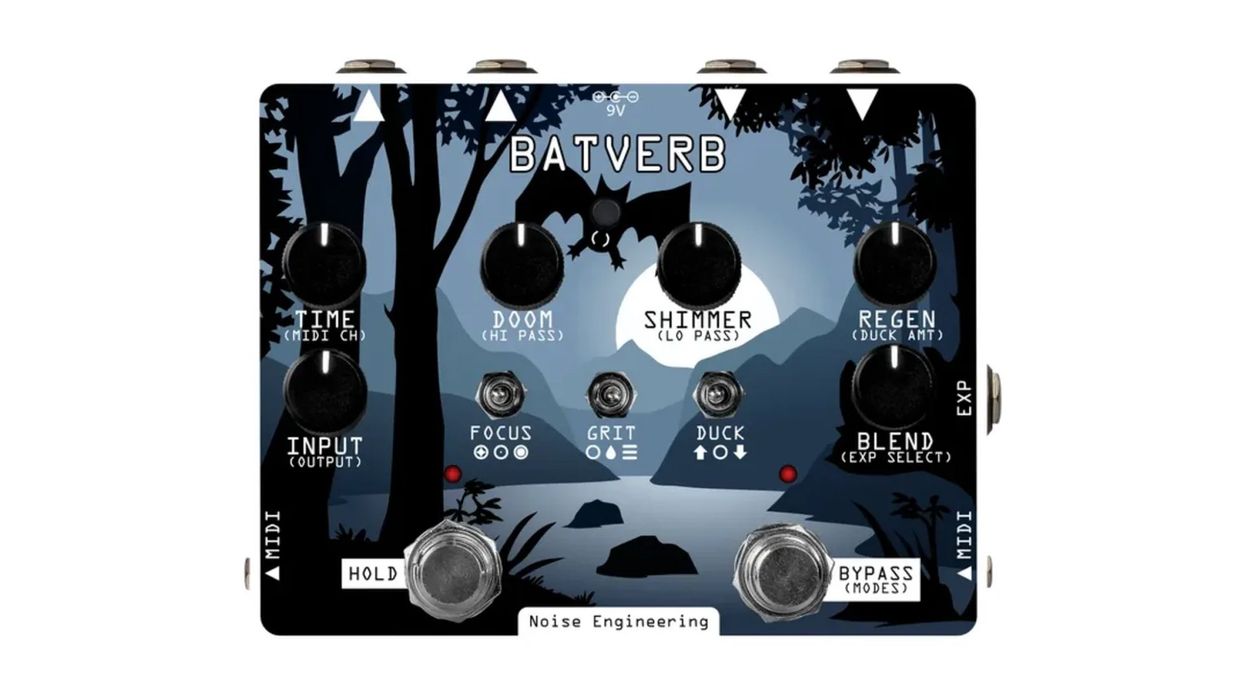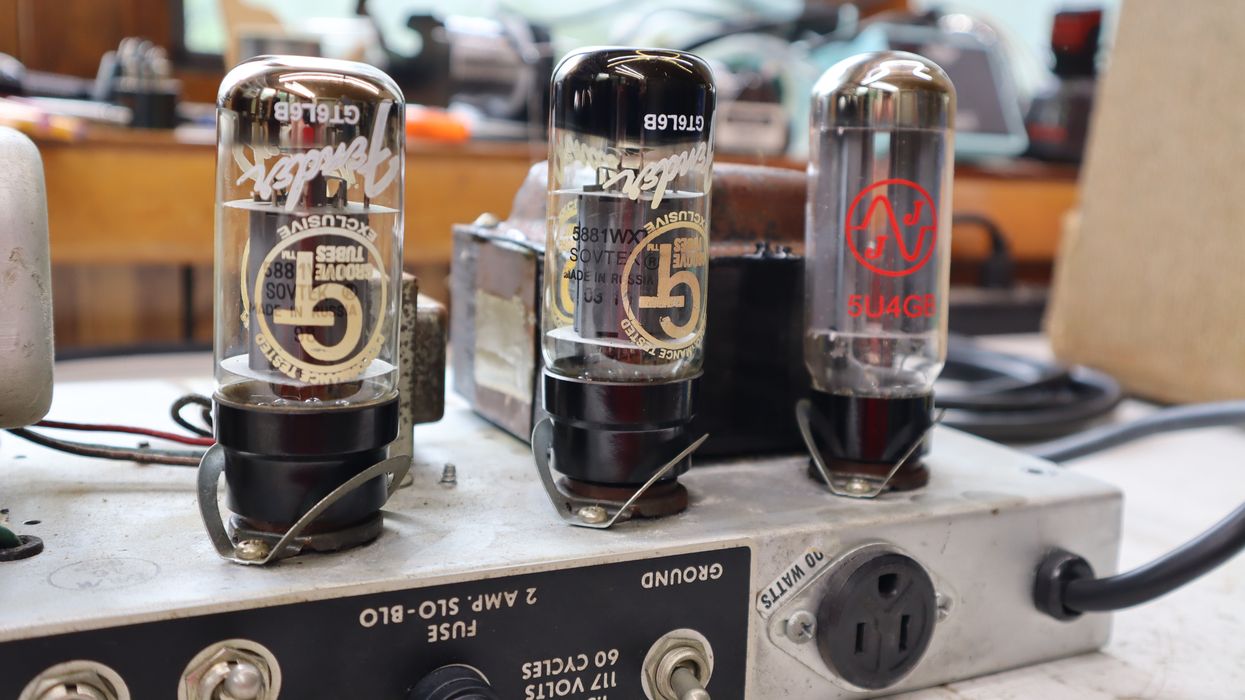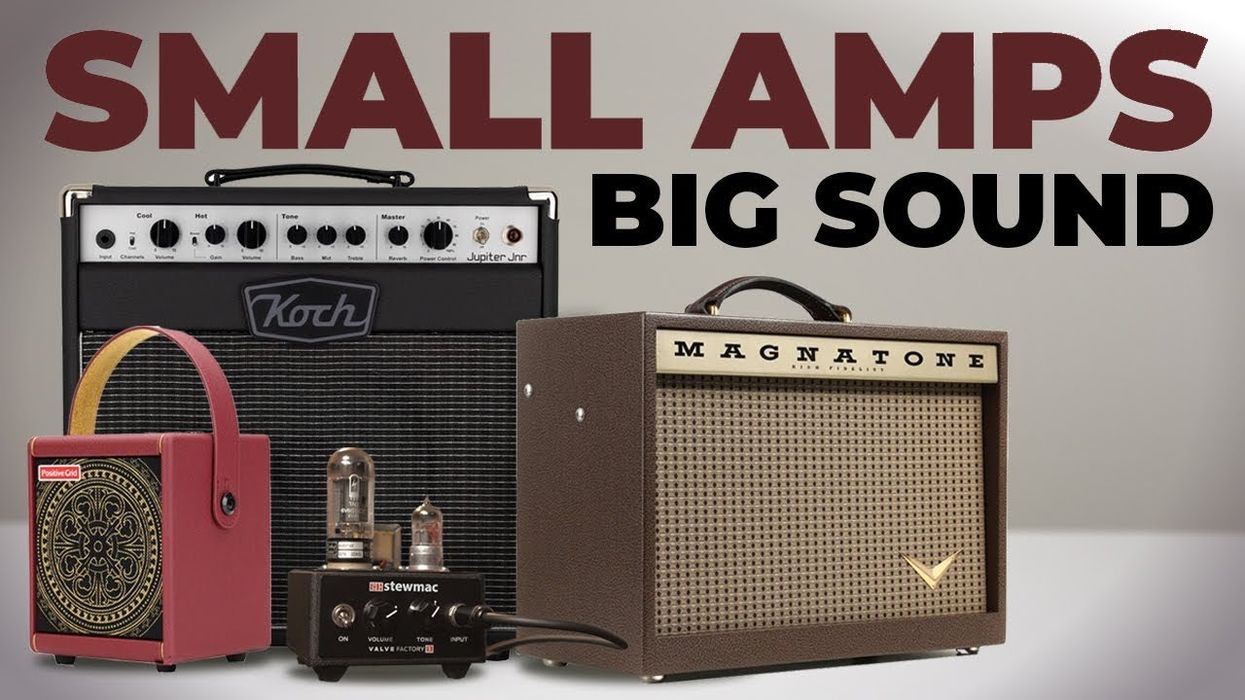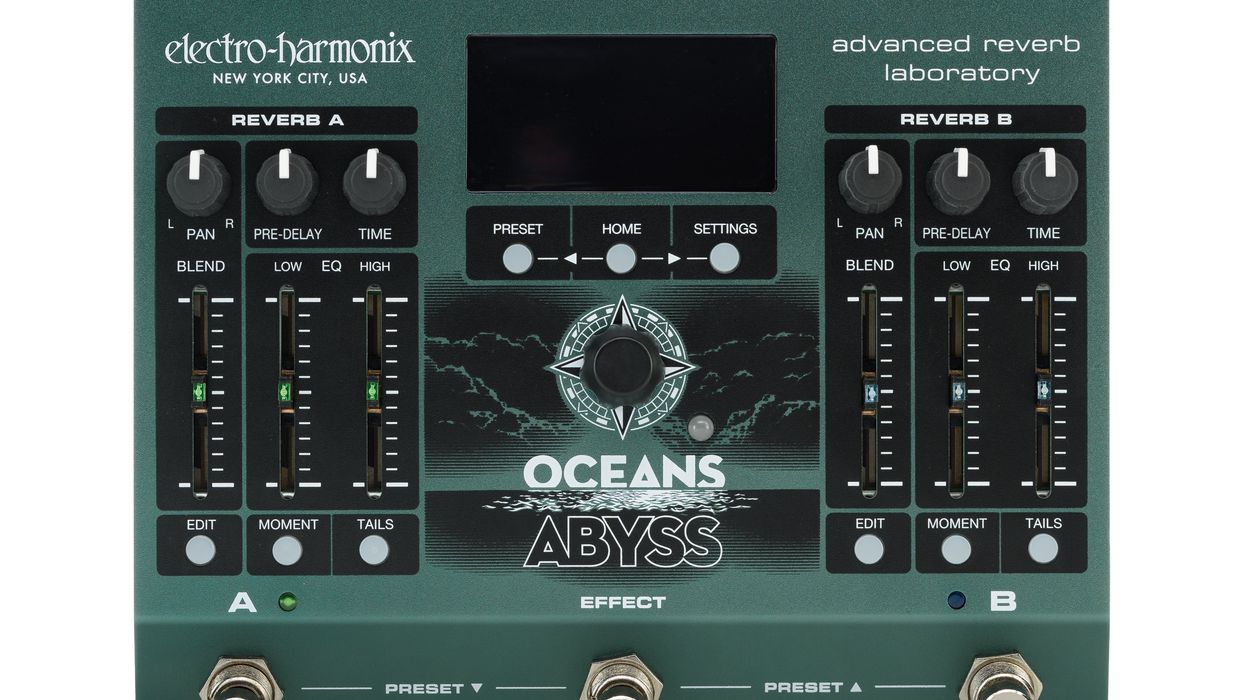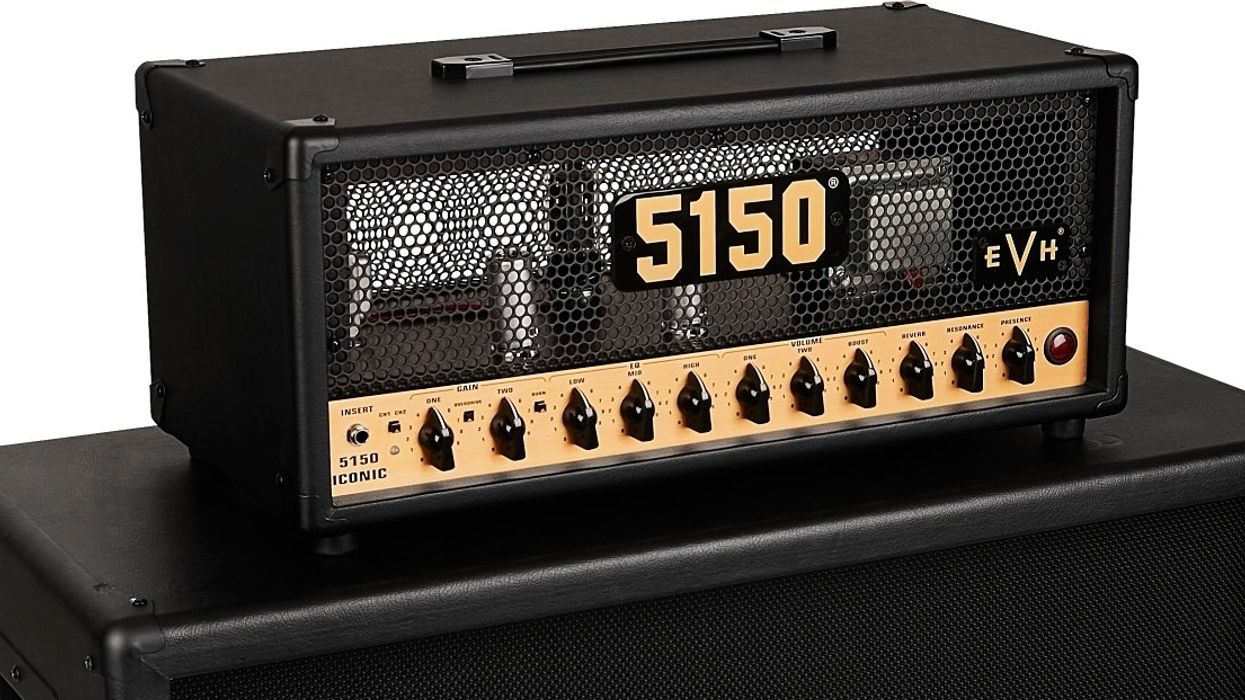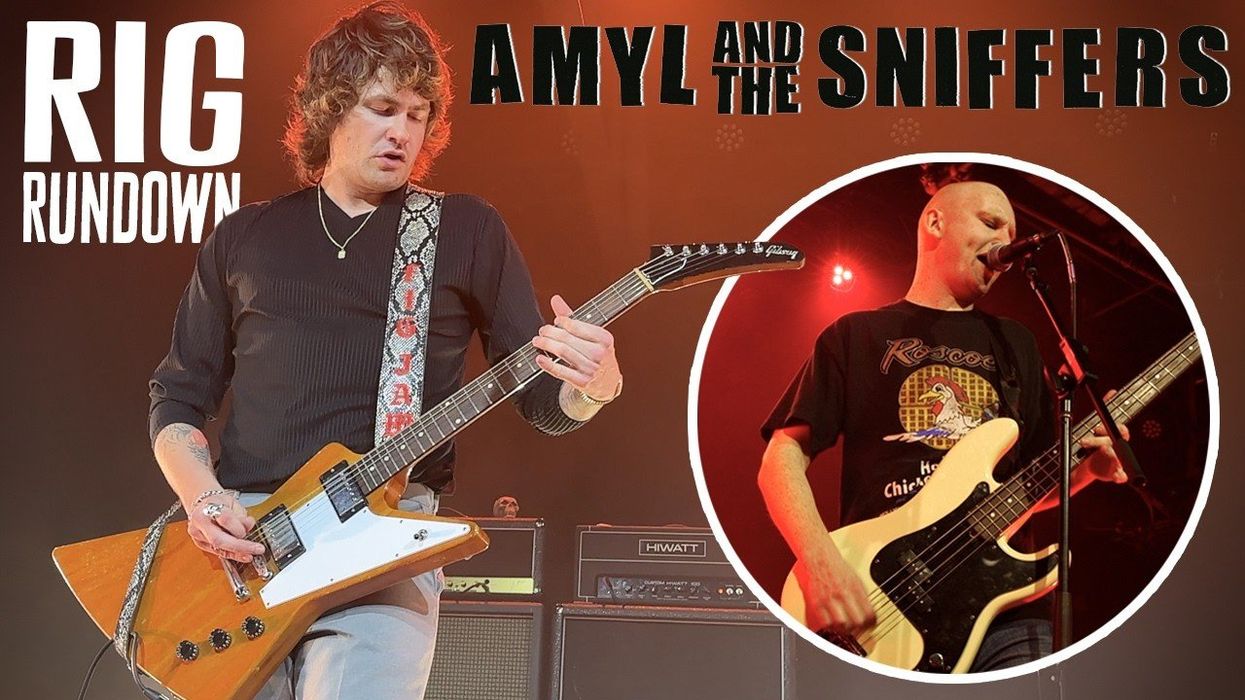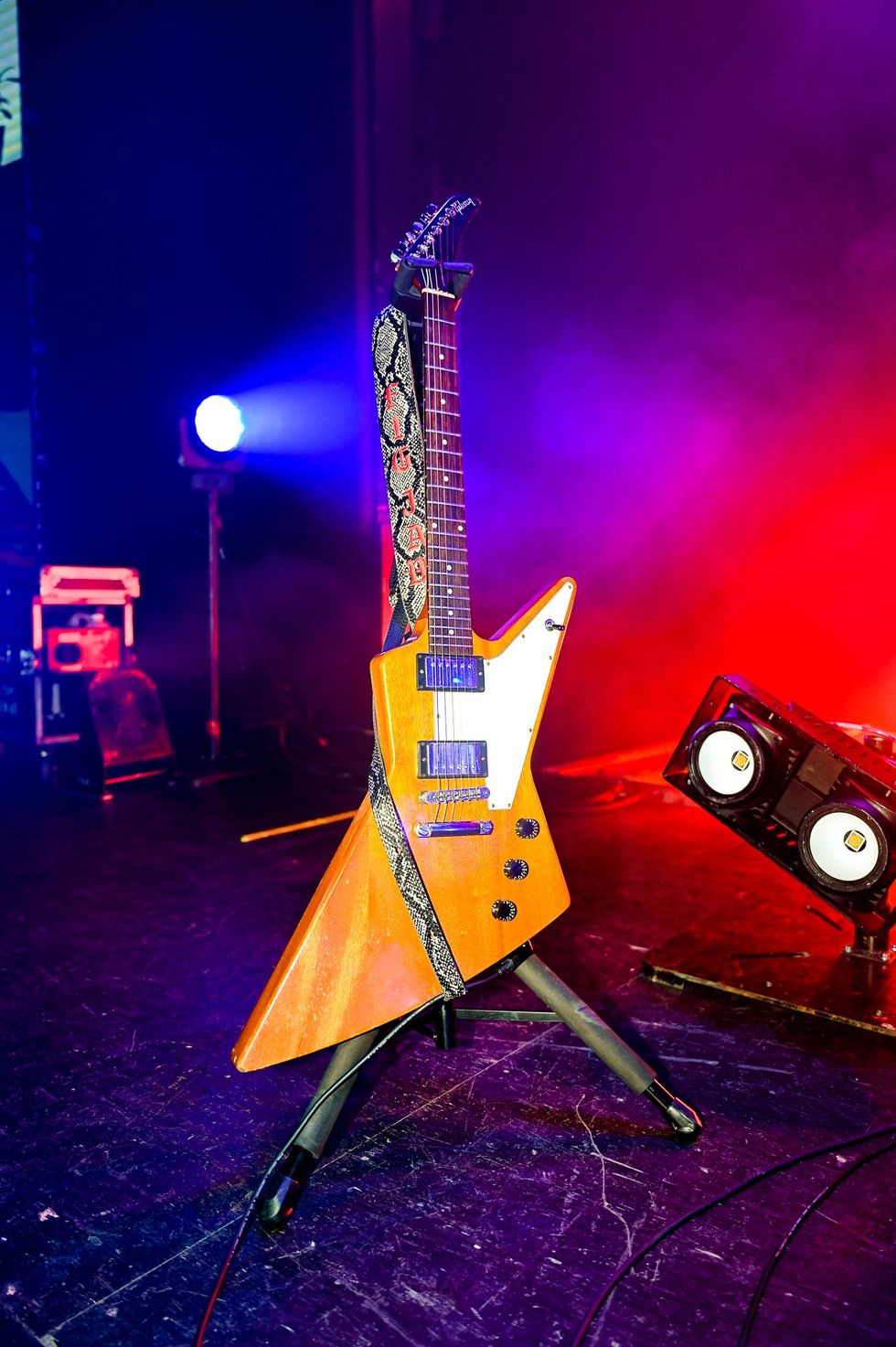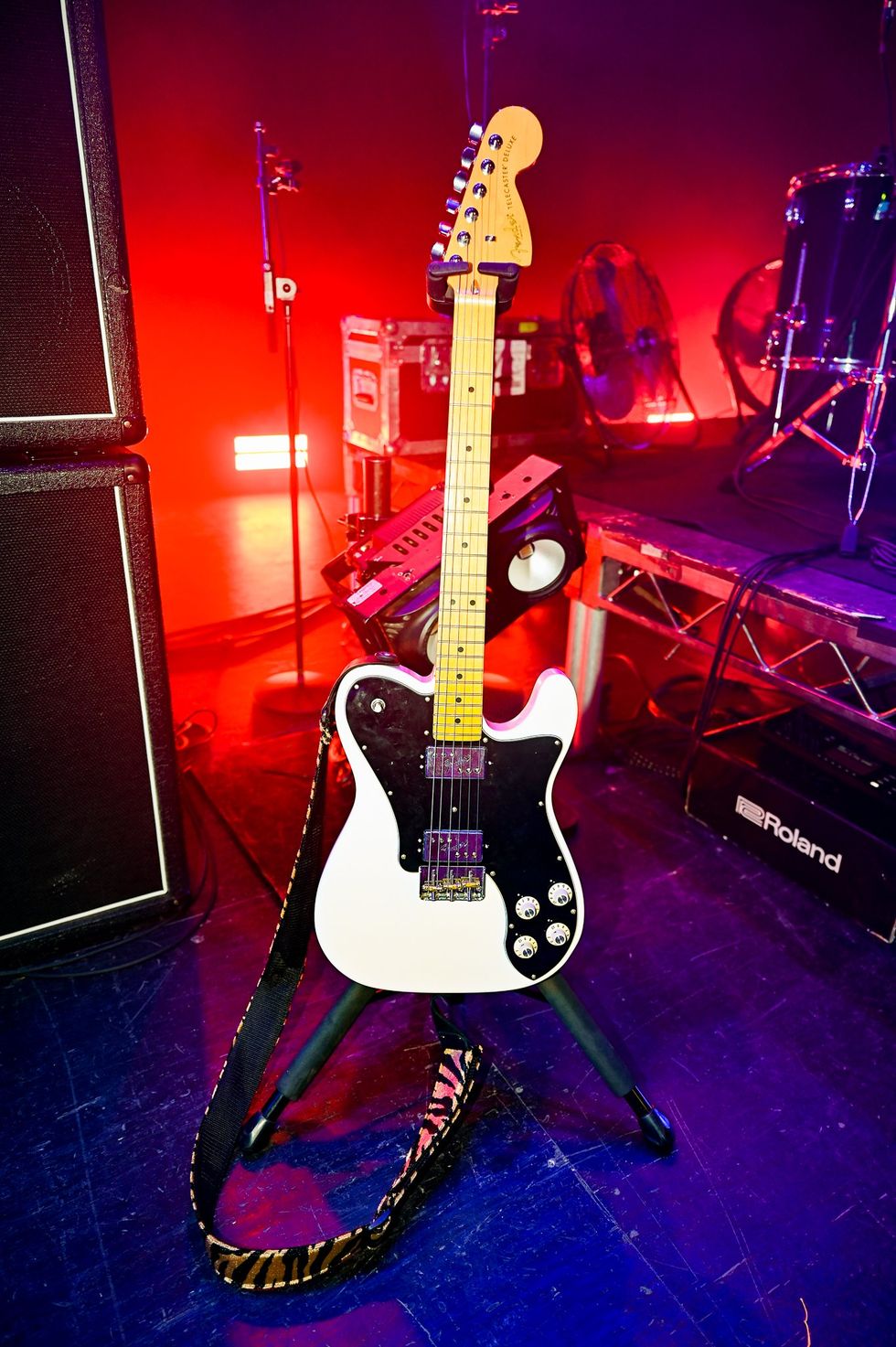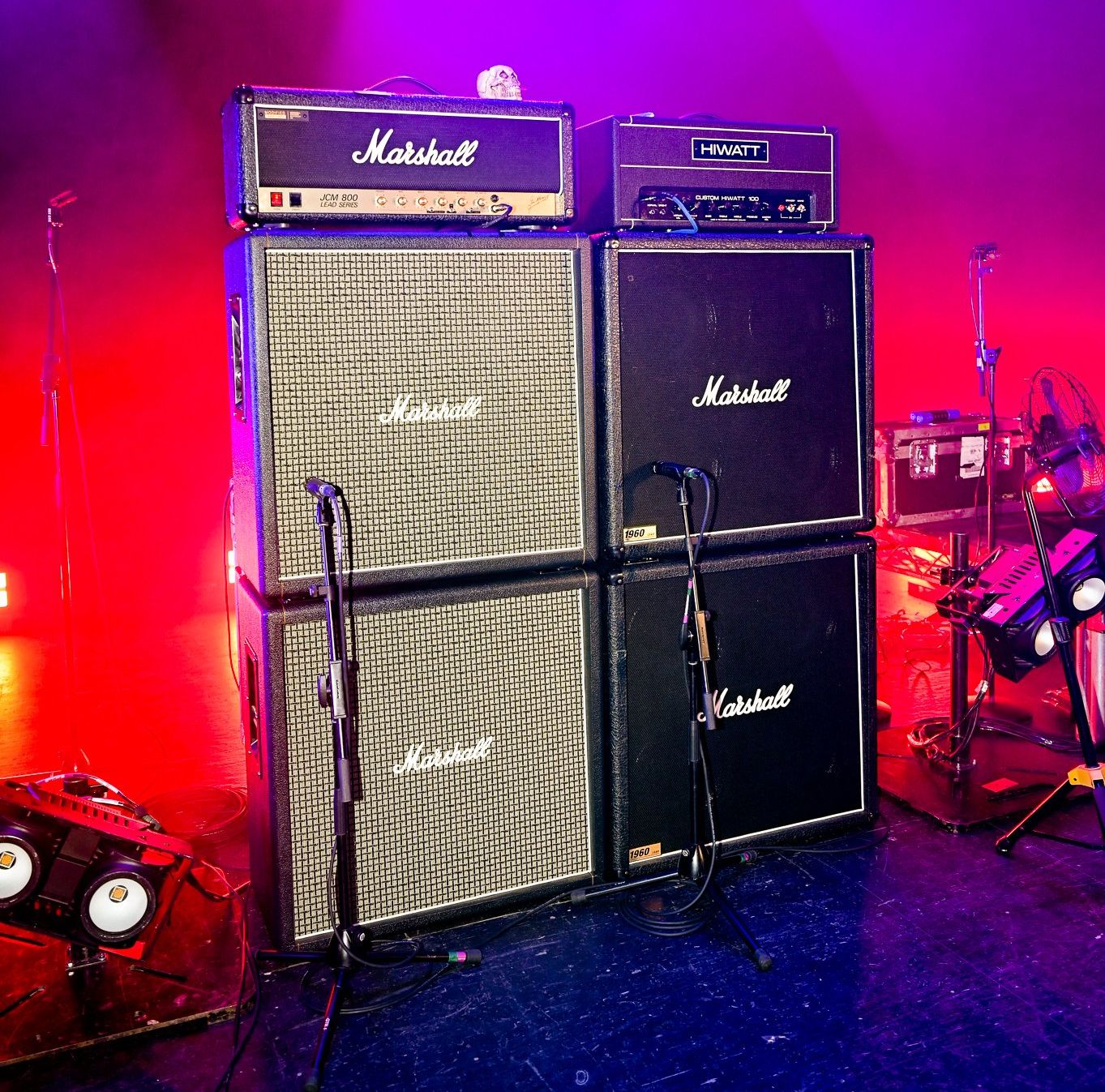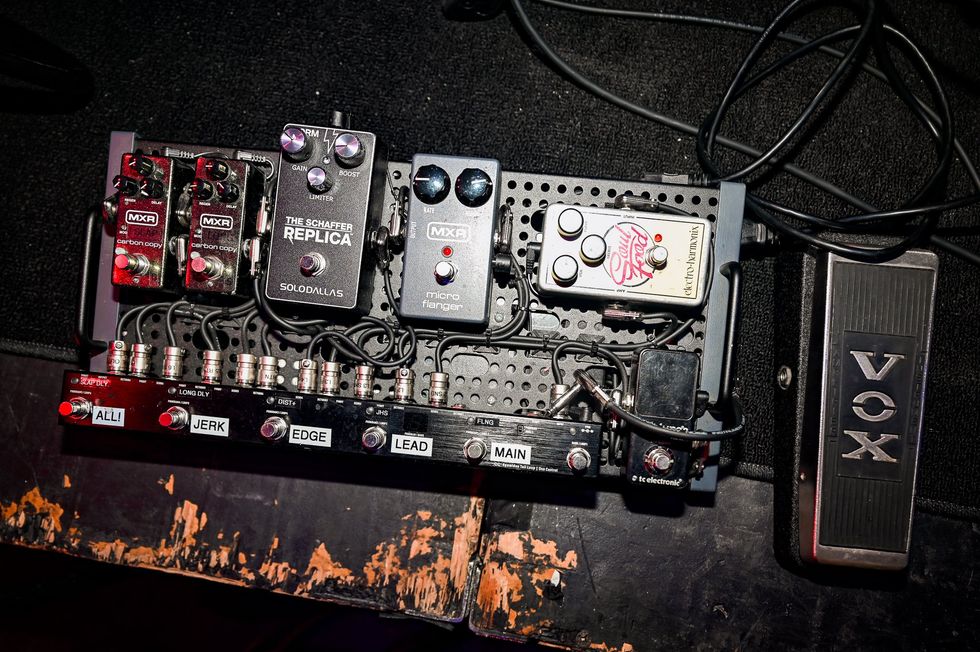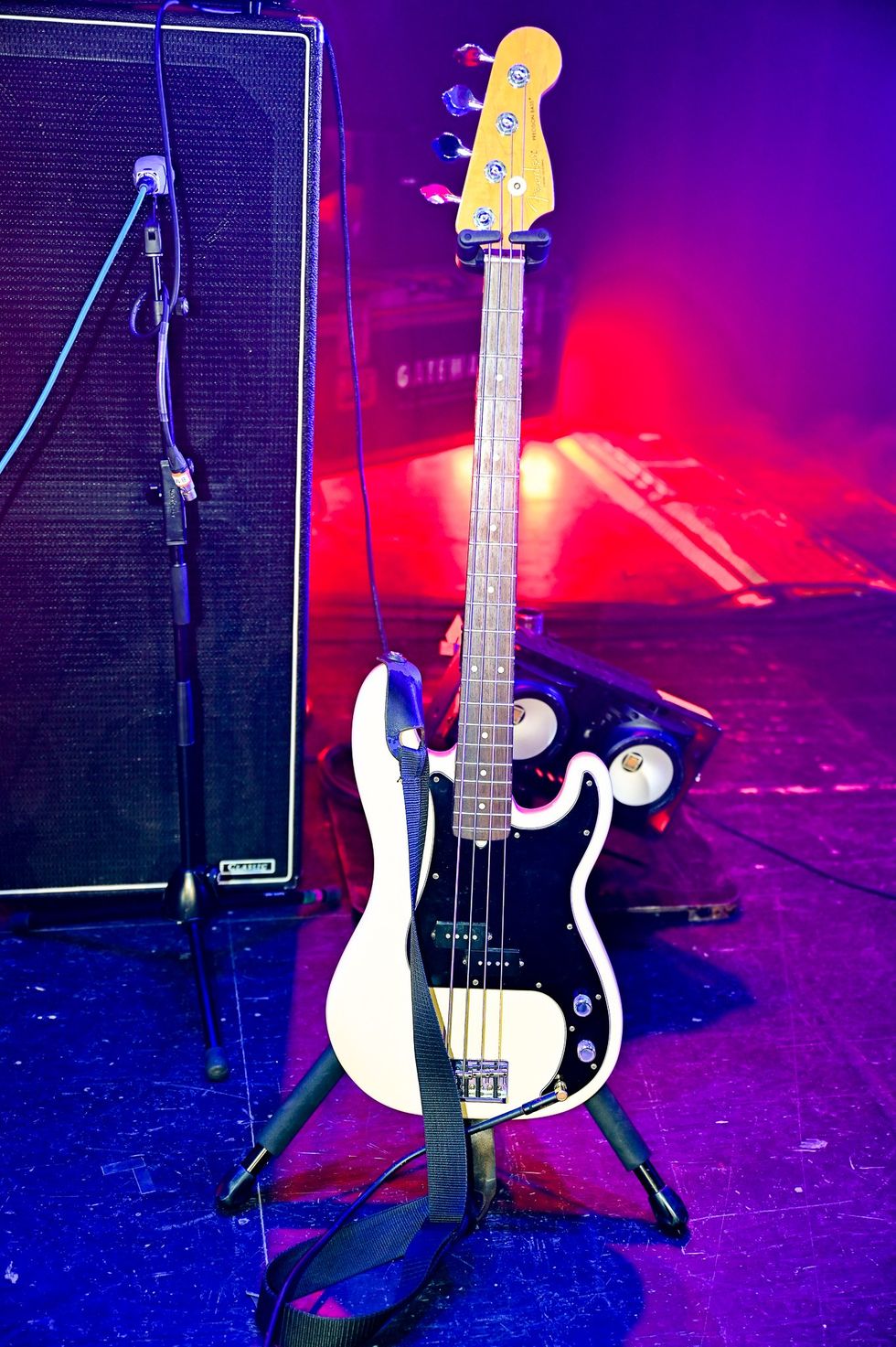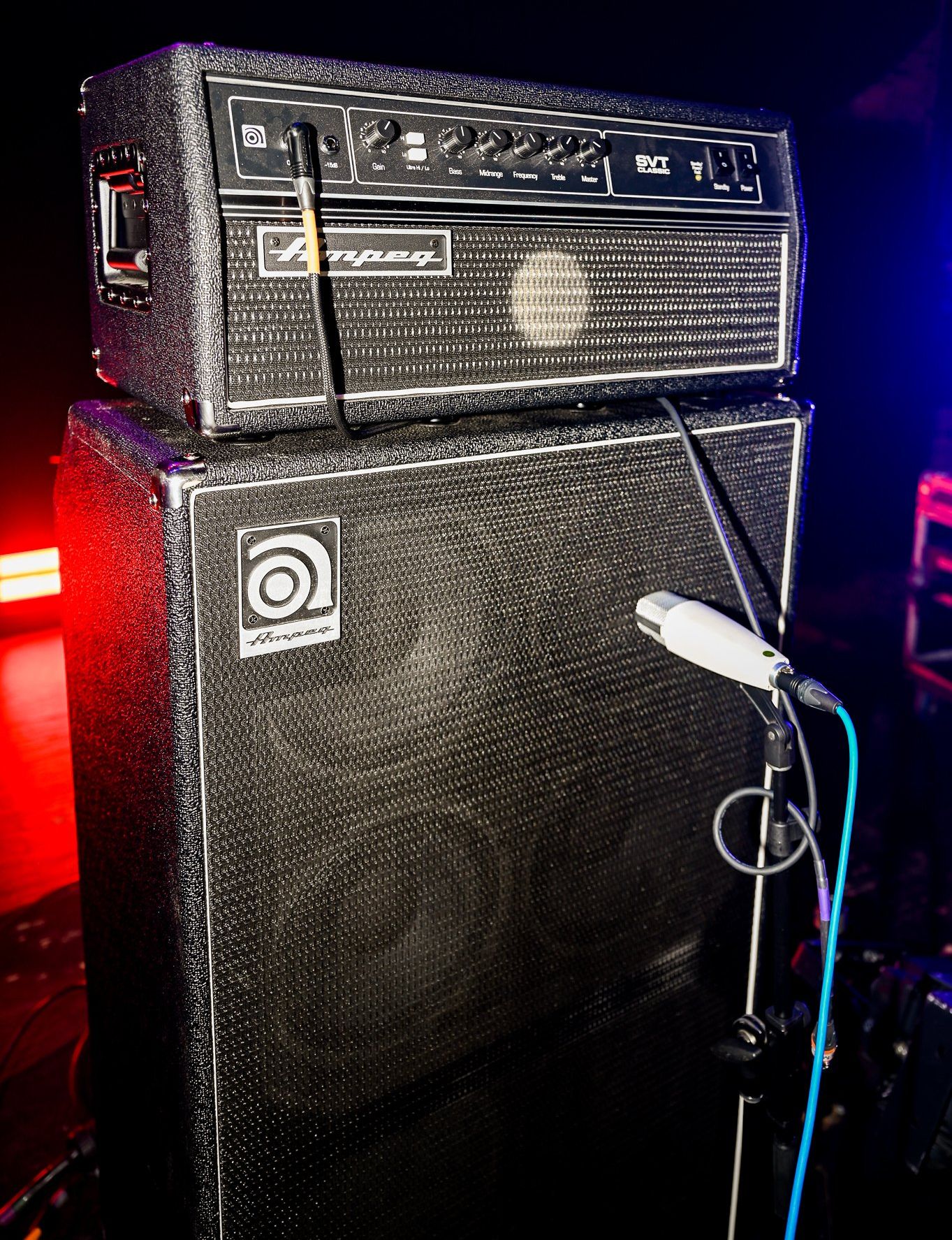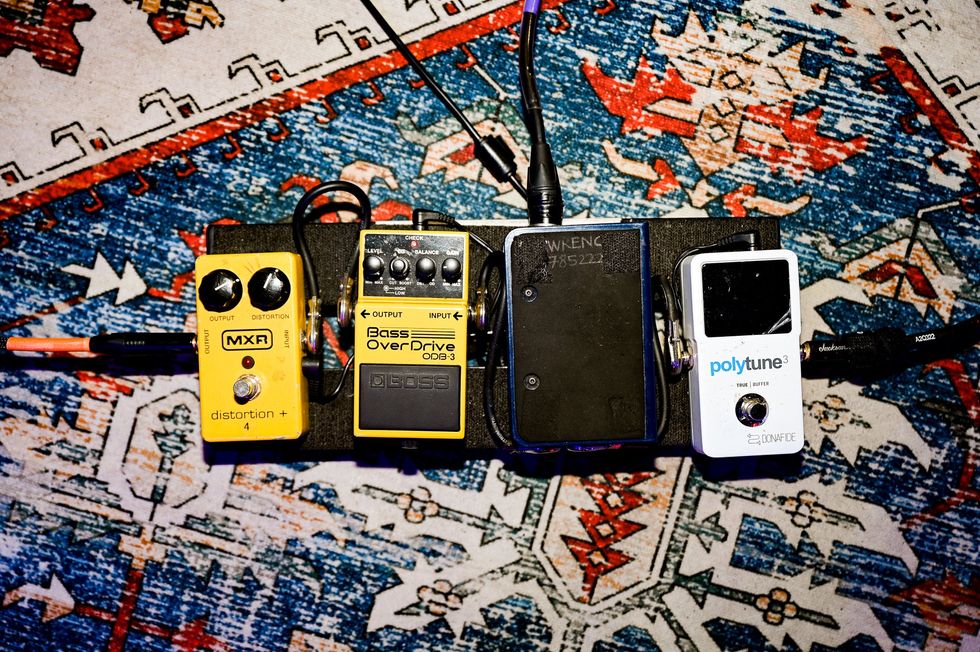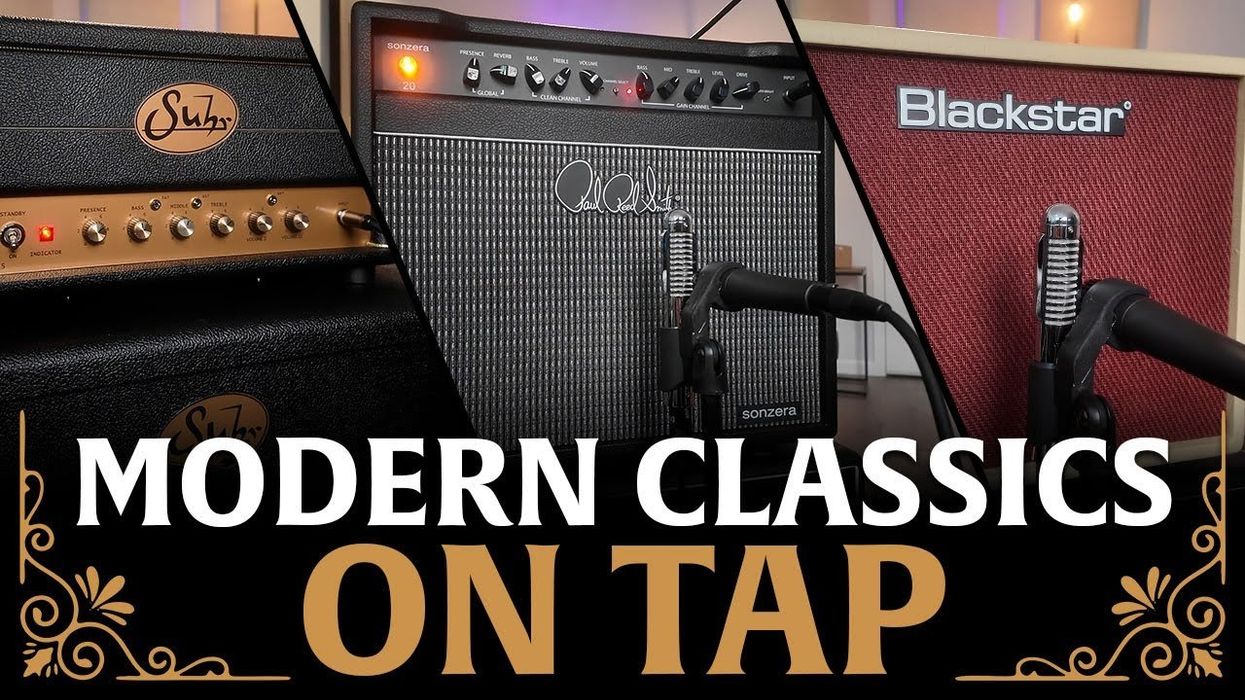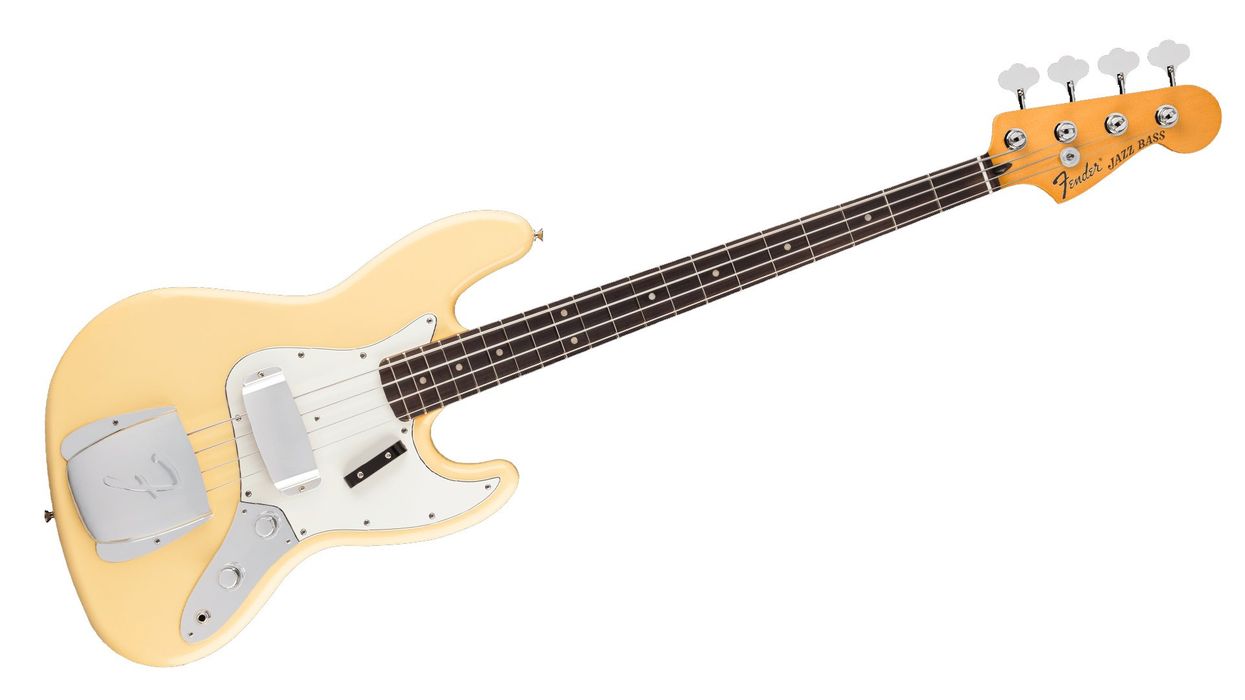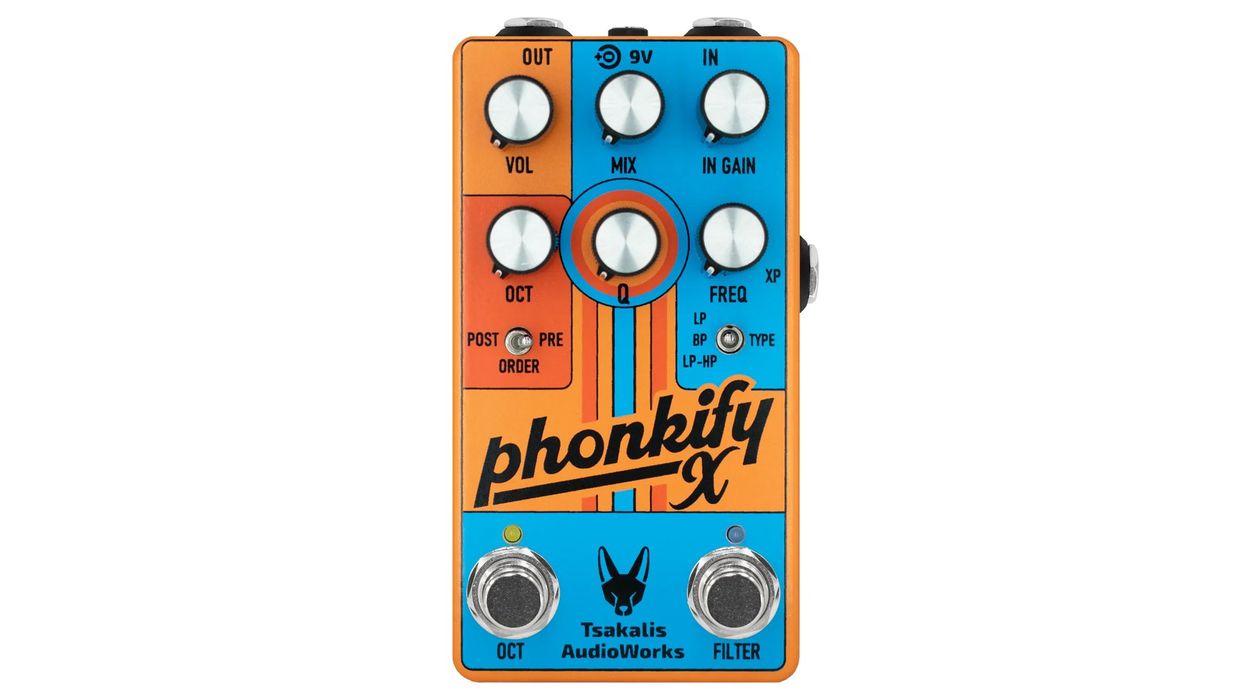Pedalboard amps seem to be all the rage lately. And I have to admit that I've become increasingly more amicable to getting big tones with less gear. The DSM & Humboldt Simplifier DLX, which delivers a lot of big tones in a single suited-for-pedalboard sized stomp, is the latest iteration of the company's "zero-watt" amp series and features plenty of bells and whistles for the stereo set.
Two Heads Are Better Than One?
At its core, the Simplifier DLX is a pair of individual analog preamps that can be combined in series or parallel, with separate EQ and gain controls. Each preamp offers a trio of amp voices (AC Brit, American, and MS Brit) along with a trio of gain modes (lead, clean, and crunch). You can even put two guitars through a single DLX if you really want to save space in the gear trailer. The effects section is arranged in stereo, with left and right controls for resonance and presence as well as digital reverb and digital emulations of mic position. In the cabinet simulation section, you can choose between combo, stack, and twin configurations in addition to selecting among different power tubes (KT88, EL34, or 6L6GC).
Fender Stratocaster plugged directly into the Simplifier DLX and recorded in stereo through a Focusrite Scarlett 2i4 interface. The panned guitars used the AC Brit and American settings while the center guitar used the MS Brit.
Input, thru, and send jacks are all stereo, and each 1⁄4" jack along the side is able to handle TRS cables. With the flick of a tiny switch you can change the input mode from either a mono, 2-channel amp setup or stereo with each preamp getting a dedicated output (either via XLR or ¼"). There is also a useful stereo spread feature that shifts the phase of one channel on specific frequencies to simulate dual cab setups. DSM clearly thought through all of the many real-world applications for this device, and the flexibility it offers to navigate any performance or routing situation is commendable.
Doin' the Brit Switch
Considering the different amp, cab, gain, and tube modes that are available, I wouldn't fault DSM if they made each preamp identical. However, DSM added phase-splitter saturation to give channel A the feel of a cranked amp. Channel B is mellower with a smoother top end.
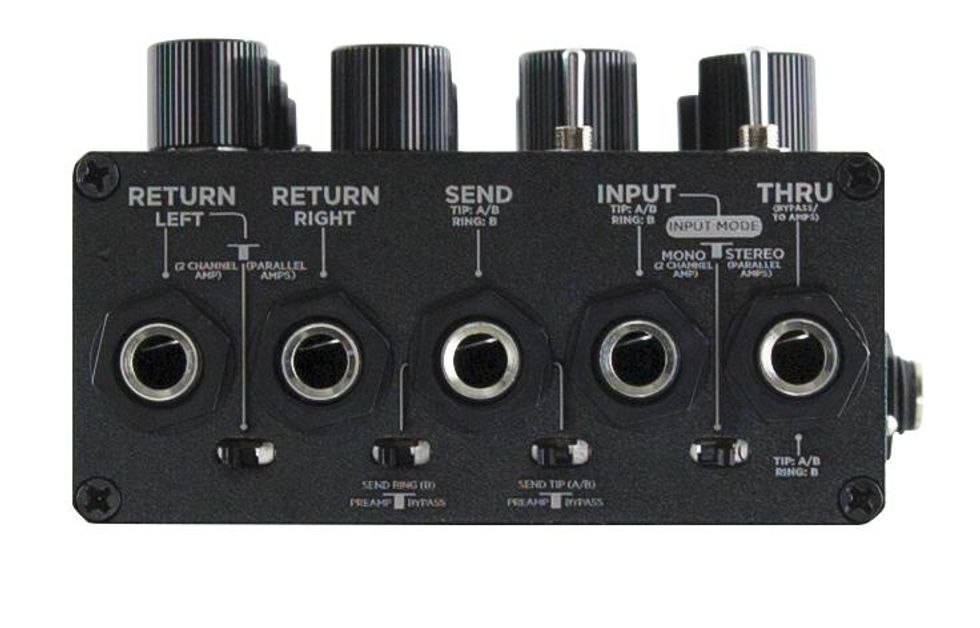
I tested the Simplifier DLX with a Stratocaster, Telecaster, and a humbucker-loaded Ibanez. In clean settings, the American amp emulation was great—especially with the built-in digital reverb, which can be used in room, plate, or a very long "ether" style. But with the included footswitch I was able to switch between the clean, 'verby Fender-esque setting on one channel and a plexi-style setting on the other. And I could use those two voices for an entire rehearsal without anything else. Naturally, the stereo effects loop makes using your own effects easy.
There are many additional sounds to explore. The crunch mode with the AC Brit amp emulation became a quick favorite. It was very responsive to my picking dynamics, though higher gain settings made the top-end a little less bloomy. Meanwhile, by utilizing the right and left mix controls for the reverb, I dialed in a plate setting on the left and a dry setting on the right channel to cop vintage EVH-style sounds. These tones are just a small sample of what the Simplifier can do.
The Verdict
The Simplifier DLX is a rock-solid piece of gear and packed with features. While complex looking on the surface, the control layout is logical and flows well. And DSM & Humboldt designers certainly maximized the available space here. I doubt they could have squeezed in another switch, I/O, or toggle. For players who lust after set-and-forget setups, the Simplifier could easily find a home on (or next to) your board. The reverb is beautiful, clean tones are punchy and warm, and there's enough gain for nearly any gig this side of nü-metal. At $459, it's not exactly priced for an impulse buy, but the portability and power make it well worth a look.


